Evolution of Trust
Written on
Jul 31, 2024
Trust is often popularly defined as the belief in the reliability, honesty, and competence of others. It is a fundamental element of human interaction. Various experts have offered various perspectives on trust, ranging from Francis Fukuyama's concept of trust as the "expectation that arises within a community of regular, honest, and cooperative behavior" (Valadbigi & Harutyunyan, 2012) to Robert Putnam's view of trust as the "glue" that holds societies together (Newton, 2001).
The transformation of trust across societies is a captivating narrative, marked by shifts in social structures, technological advancements, and cultural changes. From its origins in tightly-knit kinship groups, where trust was primarily familial, to its evolution into a complex web of trust networks encompassing strangers, trust has undergone a profound metamorphosis. In this article, we look into the multifaceted nature of trust, combining popular definitions with an aggregated understanding—trust is a delicate balance of expectations, perceptions, and experiences—in order to trace how it evolved over the course of human history.
Primitive Trust: The Dawn of Societies
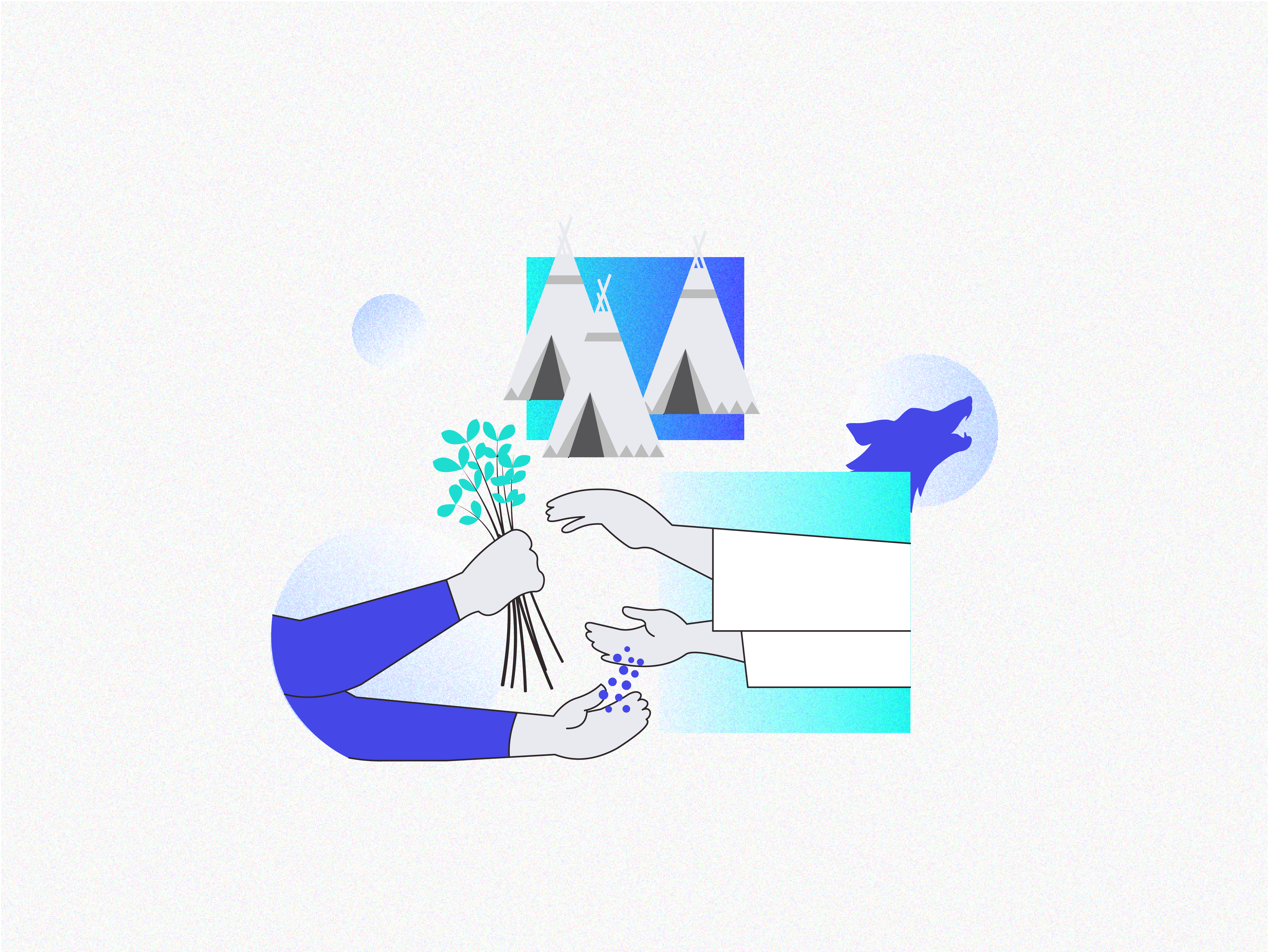
In the earliest human societies, trust was primarily based on direct, personal relationships and interactions within small communities. People relied on trust within their immediate circles for survival, cooperation, and decision-making. For example, in hunter-gatherer communities, trust was essential for sharing resources, coordinating hunts, and protecting against external threats.
This kind of trust was reinforced through shared experiences, common goals, and mutual dependence for sustenance and security. Imagine living in a village or town of just 20–30 people, all close relatives you see every single day, which wasn't unusual for early human societies, according to anthropological studies (Schaller et al., 2017). In such a small, tight-knit group, trust wasn't a choice; it was a necessity. Survival depended on shared experiences, hunting together, and relying on each other for food and protection from dangers.
The era of ‘primitive trust’ laid the foundation for social cohesion and cooperation, shaping how trust would evolve as societies expanded and became more complex. As societies grew and diversified, trust extended beyond kinship networks to include trade relationships with neighboring groups.
Let’s explore some examples of these early dynamics of trust to gain insights into the origins of societal bonds and the fundamental role that trust plays in human relationships.
Trust in the Barter System
The barter system, one of the oldest forms of exchange, relied heavily on trust. For instance, a farmer might trade a bushel of wheat for a potter’s clay pot, trusting that the pot was of good quality and the potter trusting that the wheat was well grown. Trust was perceived as the assurance that exchanged goods or services met expectations in terms of quality, quantity, and value (Ejdys and Gulc, 2020).
Most of the ancient economies relied on trust in the barter system. Archaeological findings show evidence of trade routes and networks that developed based on trust between communities (Kankale, 2023). These networks facilitated the exchange of goods over long distances, showcasing the role of trust in enabling economic transactions.

Records also show a modern resurgence of the barter system to establish fair and mutually beneficial exchanges when the economy is not stable or undergoing various problems (Anthroholic, 2023). Thus, the barter system serves as a historical example of how trust played a vital role in facilitating trade and shaping interpersonal relationships in early human civilizations.
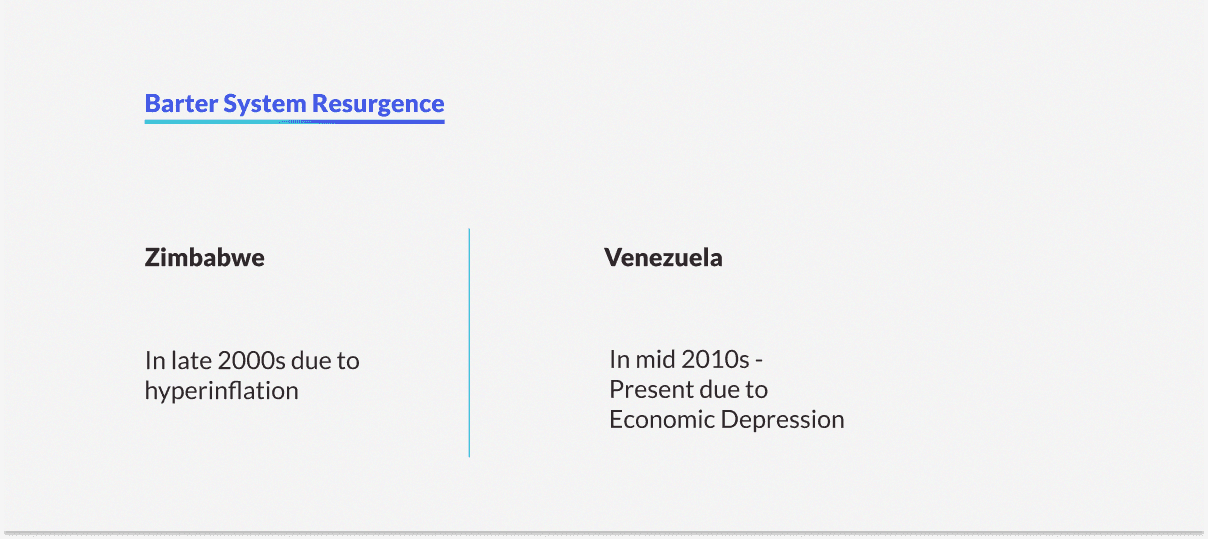
Tribal Tattoos and Symbols: Trust in Identity
In certain tribal societies, tattoos and symbols played a crucial role in establishing trust and identity within the community. These markings were not merely decorative; they served as powerful visual cues that conveyed a person’s status, achievements, and affiliations, allowing others within the tribe to quickly assess them and establish trust.
Historical and anthropological studies shed light on the significance of tribal tattoos and symbols in fostering trust. Among the Maori people of New Zealand, a person's moko communicated their identity, skills, and roles within the tribe, creating a system of trust and respect based on visual recognition (Te Papa, 2023). Similarly, in various Native American tribes, specific tattoos or body paintings were used to signify accomplishments such as successful hunts, acts of bravery, or spiritual knowledge (Native Tribe Info, 2022). These visual markers helped tribe members recognize and trust individuals with proven abilities and contributions to the community.
Tattoos and symbols were also often associated with particular roles or achievements. For instance, a warrior adorned with symbols denoting courage, strength, and battle prowess would inspire trust and respect among fellow warriors. Similarly, a healer marked with symbols representing wisdom, healing knowledge, and spiritual connections would be trusted for their abilities in medicinal practices and spiritual guidance.
Institutional Trust: The Rise of Organized Societies

The rise of institutions in human societies marked a significant shift towards organized and structured governance, economic systems, and social frameworks. As populations grew, communities faced challenges in coordinating collective actions, resolving disputes, and ensuring fair distribution of resources. Institutions emerged as formalized structures designed to address these challenges and provide stability, order, and continuity to societal functions. Thus, institutions prevailed because of trust for two main reasons:
Without trust in the fairness and effectiveness of institutions, people would be less likely to follow laws, pay taxes, or participate in collective endeavours.
Citizens and stakeholders trust institutions to provide public services, protect rights, enforce contracts, and uphold justice. This trust is fundamental for building confidence in the functioning of society and promoting investment, innovation, and progress.
Looking into historical examples, the Code of Hammurabi in ancient Mesopotamia established a legal framework based on principles of justice, accountability, and restitution, instilling trust in the fairness of legal proceedings (History.com Editors, 2023). The Roman Republic also established institutions such as the Senate, consuls, and magistrates to govern public affairs, maintain order, and represent the interests of citizens, building trust in the political system (Wasson, 2015).
Over time, trust became an important concept in institutional design and governance. Institutions adopted mechanisms to promote transparency, accountability, participation, and responsiveness to enhance trust and legitimacy. In this way, trust in institutions became a cornerstone of social contract theories: citizens entrusted authority to institutions in exchange for protection, rights, and public goods.
Below, we take a look at the three most important institutions that demonstrate how trust evolved gradually: guilds, letters of credit, and family businesses.
Guilds in the Middle Ages: Trust in Trade
Imagine living in a world without brand names, standardized measurements, or consumer protection agencies. This was the reality of medieval Europe, and trust in the marketplace was a significant hurdle. Guilds, as associations of artisans and merchants, emerged during the Middle Ages (11th–16th centuries) to address various issues in the marketplace. These organizations played a crucial role in fostering trust in trade by establishing quality standards, regulating practices, and creating a sense of community among producers.
Trust Through Quantifiable Quality Control: In an era lacking standardized measurements and inspection systems, guilds ensured a certain level of quality for both producers and consumers. Guilds established detailed regulations with quantifiable metrics to ensure consistency.

Regular inspections by guild officials served as a vital enforcement mechanism, weeding out any subpar products that could tarnish the guild's reputation and harm consumers.
The Power of a 7-Year Apprenticeship: Guilds fostered trust not just through product quality but also through the rigorous training programs they implemented. In London, for example, the Goldsmiths' Guild required a seven-year apprenticeship for anyone wishing to become a master (Hunt, 1978). During this period, apprentices learned the intricacies of the trade from experienced masters, ensuring the transmission of skills and knowledge across generations.
The Guild as a Supportive Community: Beyond regulations and training, guilds fostered a sense of community and shared responsibility among their members, with numbers reaching into the hundreds for some guilds. In Paris by the 13th century, for instance, there were over 100 different guilds, each catering to a specific trade. This sense of shared identity encouraged ethical practices and discouraged individual members from engaging in deceptive activities that could jeopardize the guild's reputation, impacting the livelihoods of hundreds of their peers.
The Hallmark of Trust: A Silver Mark of Quality Many guilds adopted the use of hallmarks, unique symbols, or stamps placed on finished products. These hallmarks served a purpose for consumers—they signified that the goods had been produced by a qualified member of the guild and met the established quality standards. For example, the Goldsmiths' Guild of London used a hallmark depicting a leopard's head to denote quality silver (Hunt, 1978). This provided a tangible mark of trust, allowing consumers to purchase with confidence, knowing the silver content met a specific standard.
While the guild system eventually declined with the rise of modern economic structures, its impact on fostering trust in trade remains significant. The concept of setting quality standards, regulating practices, and building trust through reputation continues to be a cornerstone of modern consumer protection agencies and professional licensing bodies. The legacy of guilds reminds us of the crucial role trust plays in a functioning marketplace, a principle that continues to resonate today.
Letters of Credit: Trust in Long-Distance Trade
The dawn of the Age of Exploration (15th–18th centuries) ushered in an era of long-distance trade routes, brimming with exotic goods and boundless opportunities. However, navigating these routes presented a significant challenge: trust. Separated by vast distances and unfamiliar cultures, merchants faced difficulty verifying a buyer's ability or willingness to pay for goods. The ingenious invention of the letter of credit (LC) emerged, acting as a cornerstone of trust in long-distance trade.
Letters of credit, as formal documents issued by a reputable bank on behalf of a buyer (importer), guarantee payment to the seller (exporter) upon fulfillment of specific conditions, typically involving the presentation of documentation proving the shipment of goods that meet agreed-upon quality standards. This system offered a quantifiable element of trust, replacing the uncertainty of relying solely on the buyer's promise. Data from the International Chamber of Commerce (ICC) reveals that in 2022 alone, over $1.5 trillion worth of international trade was financed through letters of credit, highlighting their continued relevance in the globalized world (Trade Finance Global, 2021).
The letter of credit system fosters trust by benefiting both buyers and sellers involved in the transaction.
Seller's Security: For sellers, the letter of credit served as a significant reassurance. They were no longer reliant on the buyer's potentially shaky finances or the complexities of collecting payments across vast distances. The issuing bank's guarantee ensured a secure and timely payment upon fulfilment of the agreed-upon terms.
Buyer's Leverage: For buyers, letters of credit offered leverage in negotiating favorable terms with sellers. The guarantee of payment upfront incentivized sellers to offer competitive prices and expedite shipments. Additionally, the LC system ensured the seller wouldn't ship inferior goods, as payment was contingent upon meeting specific quality standards documented through invoices and inspection certificates.
Letters of credit remain a vital tool in facilitating international trade today. While advancements in communication and technology have streamlined some aspects of long-distance transactions, the core principle of trust established through the LC system continues to underpin global commerce. The legacy of letters of credit reminds us of the ingenuity required to foster trust in an interconnected world.
Local General Stores: Trust in Community Commerce
In the heart of many small towns across the globe beats the lifeblood of community commerce: the local general store. Beyond offering a cornucopia of everyday necessities, these stores have historically fostered a unique brand of trust—one built on personal relationships and a shared sense of community.
Unlike the impersonal transactions of modern supermarkets, local general stores often operate on a system of trust and credit. In many developing countries, store owners, familiar with the faces and circumstances of their regular customers, extend credit, allowing them to purchase groceries and other necessities on account. This system functions on an implicit social contract: the customer's promise to repay the debt, often kept on a running tab meticulously maintained by the storekeeper.
Even today, a small percentage of independent grocery stores still offer credit to their customers. Close relationships between store owners and their customers make regular patrons not just anonymous faces; they are neighbors, friends, and fellow members of the community. This personal connection instills a sense of accountability in both parties. Customers who are aware of the store's importance to the community are more likely to prioritize repayment. Store owners, in turn, are often willing to work with customers facing temporary financial hardships, fostering a sense of loyalty and mutual respect.
The credit system is not solely a financial transaction; it is a form of social exchange built on reciprocity. Customers who receive credit often reciprocate by patronizing the store consistently and recommending it to others. This loyalty not only ensures repayment but also helps the store thrive, solidifying its position as a cornerstone of the community.
While the prevalence of credit extension in local general stores has diminished in the age of digital payments and national grocery chains, the underlying principle of trust within community commerce remains relevant. The rise of farmers' markets and local food movements highlights a renewed appreciation for the personal connections and sense of trust fostered by these smaller establishments (Ledesma and Morales, 2021).
Community Trust: The Era of Cooperation

How did we evolve from scattered individuals to communities built on trust? Imagine our Paleolithic ancestors facing harsh realities—hunting, fending off predators, or simply finding enough food to survive. Solo efforts offered little hope (Anthroholic, 2023). Cooperation, however, held immense power. Sharing food secures the community's well-being, especially for the vulnerable. Hunters relied on each other's skills, trusting that everyone would fulfill their role. Studies on hunter-gatherers like Tanzania's Hadza people reveal a remarkable level of trust (Hays, 2021). This ensured everyone's survival, particularly for those who couldn't readily contribute, like the elderly, sick, or mothers with young children. Sharing the meat, fat, and hides ensured the survival of the entire group, demonstrating a nascent sense of community trust.
As societies evolved, the nature of trust transformed. Early agricultural communities relied on a different kind of trust. Planting crops, waiting for harvests, and dividing resources fairly all hinged on a shared belief system and a sense of responsibility towards the group. Trust transcended immediate needs, fostering long-term collaboration for the collective good.
Several unique societal bonds played a crucial role in enhancing trust within early communities:
Kinship: Family ties provided a natural foundation. People felt a sense of obligation and loyalty towards relatives, fostering cooperation within extended family groups. This innate trust in kin likely laid the groundwork for broader community trust.
Shared Rituals and Beliefs: Religious practices and communal ceremonies solidified social bonds and instilled a sense of shared identity. These rituals often involved trusting others to uphold traditions and maintain social order. For instance, successful hunts might be celebrated with rituals, reinforcing trust in the community's collective ability to provide.
Reciprocity: The principle of "you scratch my back, I'll scratch yours" played a vital role. By helping each other in times of need, individuals built up a store of trust, knowing they could rely on others in return. Imagine a scenario where one family's crops failed. Trusting their neighbors to share resources during hardship would have strengthened the community's overall resilience.
Communities with high levels of trust tend to exhibit lower crime rates, better educational outcomes, and a stronger sense of civic engagement (Ingen and Bekkers, 2015). This indicates that trust is not just a feel-good notion but a crucial ingredient for a thriving society.
Let's explore specific examples where community trust continues to prevail in modern times: community savings and loans and cooperatives.
Community Savings and Loans: Trust in Collective Financial Responsibility
Across the globe, a unique system has fostered financial resilience and trust within communities for centuries: community savings and loans (CSL). These informal groups, often rooted in shared identities or geographic proximity, operate on a core principle: trust in collective financial responsibility. Members contribute regular savings to a common pool, which is then loaned out to individual members in times of need. This system thrives not on formal contracts or collateral but on the shared trust and commitment of its participants.
While traditional financial institutions often require credit scores or collateral, CSLs offer an alternative path to financial inclusion. Data from the World Bank suggests that over 600 million people worldwide participate in some form of informal financial association (World Bank, 2021). This highlights the significant role CSLs play in empowering communities, particularly in regions with limited access to traditional banking services. Trust within CSLs is multifaceted, with several key aspects:
Social Reputation: Membership in a CSL often involves a degree of social cohesion and pressure. Members are aware that their financial behavior will be known to the group, potentially impacting their reputation within the community. This acts as a deterrent against defaults.
Peer Monitoring: CSLs often have designated individuals or committees responsible for monitoring loan repayments. This peer-to-peer accountability ensures responsible borrowing and repayment practices.
Shared History and Understanding: CSLs frequently operate within communities with a shared history and understanding of each other's circumstances. This allows members to assess one another's creditworthiness based on personal knowledge and trust rather than solely relying on credit scores.
CSLs aren't relics of the past. Low-income adults in developing countries rely on informal financial mechanisms like CSLs. This underscores the ongoing relevance of CSLs in promoting financial inclusion and trust within communities worldwide.
Cooperatives: Trust in Mutual Benefit
Cooperatives, businesses owned and democratically controlled by their members, stand as testaments to the power of trust in achieving shared prosperity. Unlike traditional businesses focused on maximizing profits for shareholders, cooperatives prioritize the well-being of their members. This unique structure hinges on a fundamental principle: trust in each other's commitment to the cooperative's collective success.
The cooperative movement boasts a significant global presence. According to the International Cooperative Alliance (ICA), there are over 3 million cooperatives worldwide, employing an estimated 279 million people (International Cooperative Alliance, 2020). In cooperatives, trust manifests in the decision-making process. Unlike hierarchical corporations, cooperatives operate on democratic principles. Members, often referred to as "owners" or "shareholders," have a say in major decisions, from electing leadership to determining product pricing and profit distribution. This democratic structure fosters trust as members believe their voices are heard and their interests are prioritized. Trust within cooperatives also extends beyond simply voting rights, with the following key aspects:
Shared Values and Vision: Members of cooperatives are united by a common purpose and a set of core values, such as fairness, social responsibility, and sustainability. This shared vision fosters trust and cooperation as members work towards a collective goal that transcends individual gain.
Transparency and Accountability: Cooperatives operate with a high degree of transparency. Financial records and leadership decisions are typically accessible to all members. This fosters trust by ensuring everyone has a clear understanding of the cooperative's operations and finances.
Member Education and Engagement: Many cooperatives invest in educating their members about cooperative principles and governance. This empowers members to participate effectively in decision-making and hold leadership accountable, further solidifying trust.
Cooperatives not only benefit their members but also contribute significantly to the wider economy. The ICA estimates that cooperatives generate roughly 10% of the world's GDP, underscoring the far-reaching impact of the cooperative model, where trust fosters economic growth and shared prosperity (International Cooperative Alliance, 2020). Thus, cooperatives offer a compelling model of trust-based collaboration in the economic sphere. They demonstrate how shared ownership and a commitment to mutual benefit can create a more resilient and equitable business environment.
Navigating the Unknown: Trust in the Age of collective trust
The contemporary world is dominated by interactions between strangers. This phenomenon, often termed ‘anonymous trust’, lies at the very heart of our increasingly interconnected society. But who exactly are these strangers, and how did this age of anonymity arise? More importantly, why does trust still hold such significance in a world brimming with the unknown?
The concept of "strangers" is not a binary one. Rather, it exists on a spectrum of familiarity. At one end lie those we've never met—individuals encountered fleetingly online or in passing on the street. Further along the spectrum reside casual acquaintances—the barista at our favorite coffee shop or the person we see regularly at the gym. While we may not share intimate details of our lives with these individuals, a baseline level of trust allows for these everyday interactions to unfold smoothly.
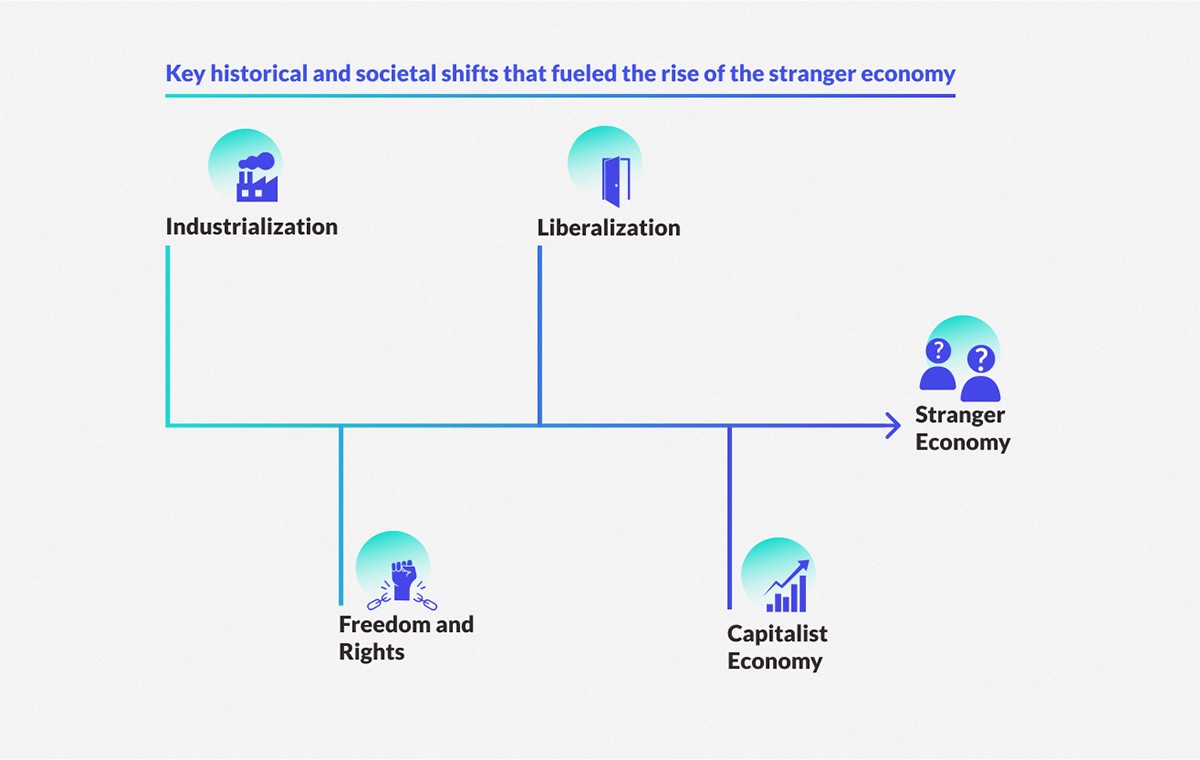
Several key historical and societal shifts have fueled the rise of the stranger economy:
Industrialization led to mass migration from rural settings to urban centers, which necessitated new forms of interaction and trust-building to navigate daily life.
Freedoms and Rights: People are no longer tethered to their hometowns, leading to more frequent interactions with strangers in new and unfamiliar environments.
Liberalization: Globalized marketplace necessitates trust between businesses and consumers across borders, often without the benefit of face-to-face interactions.
Capitalist Economy: Individuals are no longer limited to trading with those they know personally, opening doors to a wider pool of potential goods and services offered by unfamiliar vendors.
The rise of the stranger economy presents both challenges and opportunities. While anonymity can foster innovation and efficiency, it also necessitates a foundation of trust. As we navigate this increasingly interconnected world, understanding and nurturing trust will be crucial for building a thriving and prosperous future. Below, we take a closer look at the five main cornerstones that enhance trust in this stranger-based economy.
Ratings and Reviews: Trust in Digital Feedback
In today's digital age, online reviews and ratings have become a cornerstone of trust for consumers navigating a vast and often unfamiliar marketplace. Platforms like Amazon, Yelp, and countless others rely on this system of ‘digital feedback’, in which users share their experiences to guide the purchasing decisions of others. But how exactly does this system build trust, and how has it evolved over time?
The influence of online reviews is undeniable. According to a study by BrightLocal, a staggering 93% of consumers rely on online reviews to make purchasing decisions (Paget, 2024). This data highlights the power digital feedback wields in shaping consumer trust and behavior.
The concept of trust through feedback isn't new. Traditionally, word-of-mouth recommendations from friends and neighbors played a vital role in building trust for local businesses. Early online review platforms emerged in the late 1990s, offering a new avenue for consumers to share their experiences. Over time, these platforms have become more sophisticated, incorporating features like star ratings, detailed written reviews, and the ability to respond to feedback. This continuous evolution has fostered a more nuanced and informative feedback loop, further enhancing trust in the system.
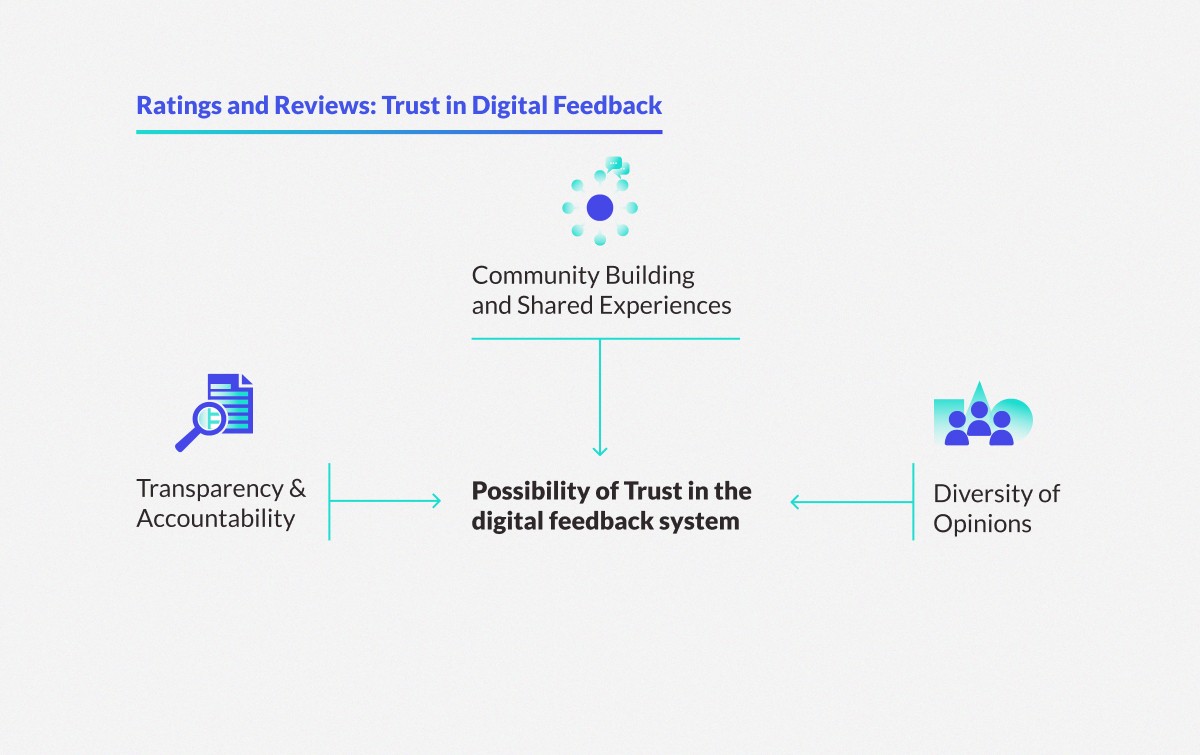
The world of digital feedback is a dynamic system that continues to evolve. While challenges like fake reviews and review manipulation exist, platforms are constantly working on implementing measures to ensure the integrity and authenticity of user-generated content.
Ride-Sharing and Home-Sharing Platforms: Trust in Shared Economy
The rise of the sharing economy has revolutionized how we access transportation and accommodation. Platforms such as Uber and Airbnb connect users directly, fostering a unique trust dynamic between complete strangers. This trust is not built face-to-face, but rather through a carefully constructed system that leverages technology and user-generated data.
The shared economy is experiencing phenomenal growth. Specifically, in the ride-sharing sector, a study by Statista, a leading provider of market and consumer data, reveals that over 1.5 billion people will use ride-hailing services globally in 2023 (Statista, 2024). Similarly, Airbnb reports that over 4 million hosts have welcomed guests into their homes, showcasing the significant scale of trust operating within the home-sharing space (Airbnb Newsroom, 2024).
Therefore, how do ride-sharing and home-sharing platforms establish trust between users who may never have met?
User Profiles and Reputation Systems: These profiles allow users to get a sense of the person they'll be interacting with. Furthermore, reputation systems based on user reviews and ratings incentivize positive behavior from both riders/guests and drivers/hosts. This system encourages drivers to maintain a high standard of service to ensure positive ratings and continued access to the platform.
Background Checks and Verification Processes: Many platforms conduct background checks on drivers and hosts to enhance safety and security. This additional layer of verification provides peace of mind to users and fosters trust in the overall system. Some platforms, for example, requirepayments all hosts to undergo a government-issued ID verification process to ensure user safety.
Secure Payment Systems: The integration of secure payment systems eliminates concerns about financial transactions between strangers. Platforms often hold onto payment until the service is complete, protecting both parties involved.
Customer Support and Dispute Resolution Mechanisms: Robust customer support systems and clear procedures for resolving disputes provide users with a sense of security and recourse in case of any issues. Knowing that a platform has your back fosters trust in the overall experience.
The impact of trust within the shared economy extends beyond facilitating transactions by allowing increased accessibility and affordability, community building, and economic empowerment through the monetization of assets.
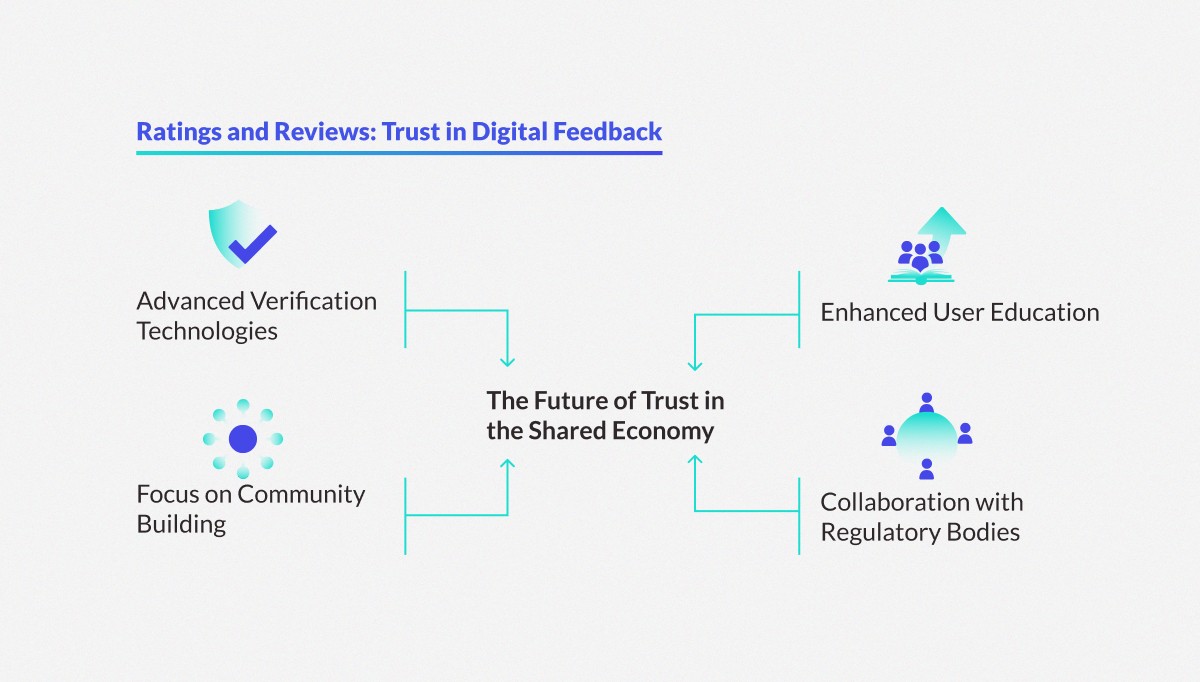
Open Source Software and Trust in Collective Intelligence
The world of technology thrives on collaboration. Open-source software (OSS) embodies this collaborative spirit, fostering a unique trust dynamic known as trust in collective intelligence. In OSS projects, developers from across the globe contribute their time, skills, and code to build and improve software, all while relying on a shared sense of purpose and trust in each other's work.
Open-source software plays a vital role in the tech industry. According to a report by The Linux Foundation, an organization promoting open-source technologies, an estimated 77% of organizations use open-source software in their IT infrastructure (Linux Foundation, 2022).
Open-source projects thrive on a foundation of trust, using the following key aspects:
Meritocratic Contribution and Review Process: Code contributions from developers undergo a rigorous review process by the community. This ensures the quality and security of the codebase, fostering trust in the overall project's integrity.
Transparency and Shared Ownership: The open-source nature allows anyone to view and contribute to the codebase, promoting transparency and a sense of shared ownership among developers. This fosters trust in the project's direction and development process.
Collaborative Culture and Mutual Respect: Open-source communities foster a collaborative and respectful environment. Developers trust that their contributions will be valued and considered, fostering trust and a sense of community.
By embracing transparency, collaboration, and mutual respect, developers around the world are building the software infrastructure of tomorrow. As we move forward, fostering a robust and trustworthy open-source ecosystem will be essential for fostering innovation and shaping the future of technology—evolving governance models, the role of AI, and the increasing focus on diversity and inclusion.
Crowdfunding Platforms: Trust in Collective Funding
The rise of crowdfunding platforms, such as Kickstarter and GoFundMe, has revolutionized fundraising. These platforms empower individuals and organizations to raise capital directly from the public, bypassing traditional financial institutions. However, this innovative approach hinges on a critical element: trust in collective funding.
Crowdfunding is experiencing explosive growth. According to a report by Massolution, a research firm specializing in crowdfunding, the global crowdfunding market reached a staggering US$342.8 billion, with projections indicating continued growth in the coming years (Hobey, 2015).
Crowdfunding platforms leverage trust in several key ways:
Transparency and Accountability: Platforms implement measures to ensure transparency, such as requiring detailed project descriptions, funding goals, and planned uses of funds. This allows potential backers to understand how their contributions will be utilized.
Reputation Systems and Reviews: Many platforms incorporate reputation systems and user reviews, allowing backers to assess the credibility of project creators and past funding experiences. This helps build trust and empowers backers to make informed decisions about where to invest their funds.
Escrow Services and Secure Payment Processing: The use of escrow services ensures that funds are held securely until project creators meet their stated goals. This mitigates the risk of backers losing their money if a project fails to launch. Secure payment processing systems further bolster trust by protecting user financial information.
As the crowdfunding landscape evolves, maintaining and strengthening trust will be essential for its continued success. This will be achieved by focusing on blockchain technology and decentralization, improving regulatory frameworks, focusing on investor education, making crowdfunding a mainstream investment option, funding a more diverse range of projects, and increasing global participation.
Online Learning Platforms: Trust in Digital Education
The rise of online learning platforms has democratized access to education. Learners worldwide can now access a vast library of courses on diverse topics from the comfort of their homes by leveraging a critical element: trust in digital education. This emphasizes the crucial role that trust plays in the online learning landscape in several key ways:
Reputable Course Creators and Instructors: Platforms curate content from established institutions and qualified instructors. This allows learners to trust that the courses are taught by experts in their respective fields. For instance, some platforms partner with prestigious universities like Yale and Stanford to offer courses, while others feature instructors with demonstrable industry experience.
Course Reviews and Ratings: Student reviews and ratings provide valuable insights into the quality of the learning experience. This allows potential learners to assess the effectiveness of courses before enrolling.
Clear Learning Objectives and Course Structure: Well-defined learning objectives and a structured curriculum outline help learners understand what they will gain from a course. This fosters trust by ensuring transparency and managing expectations about the learning experience.
The Future of Trust in Online Learning:
As the online learning landscape evolves, fostering and strengthening trust will be essential for its continued success, which already encompasses several innovations:
Artificial Intelligence (AI) for Personalized Learning: AI-powered platforms can personalize learning experiences for individual students, leading to a more effective and engaging educational journey.
Virtual Reality (VR) and Augmented Reality (AR) Integration: VR and AR technologies have the potential to create immersive learning environments, enhancing trust and engagement in the digital classroom.
Focus on Micro-Credentials and Skill Verification: Platforms can explore issuing micro-credentials or badges upon course completion, allowing learners to verify their acquired skills to potential employers.
Greater Recognition and Employability: As the quality and legitimacy of online learning experiences become more established, employers may place greater weight on micro-credentials and certifications earned through trusted sources, leading to increased recognition of online learning as a valuable pathway to career advancement.
A Blended Learning Model: The future of education may lie in a blended model that combines the flexibility of online learning with the personal interaction of traditional classrooms. This can create a more comprehensive and engaging learning experience for students. Trust in online platforms will be crucial for seamlessly integrating digital and in-person learning components.
Democratization of Higher Education: Reduced costs and increased accessibility associated with online learning can make higher education more attainable for a wider range of learners. As trust in online platforms grows, so too does the potential to democratize access to quality education on a global scale.
Prioritizing quality, engagement, and continuous innovation will be key to solidifying trust and ensuring that online learning platforms remain a cornerstone of a dynamic and accessible educational landscape for the future.
The Enduring Power of Collective Trust in a Technological Age

Looking ahead, there are several trends highlighting the growing importance of trust in the future, supported by the following key aspects:
Decentralized systems and blockchain
The power of artificial intelligence for trustworthiness
The need for global collaboration
While numerous projections suggest significant growth, our true conviction lies in the world’s clear shift towards embracing the concept of collective trust. This emerging paradigm is more than a trend; it represents a foundational change in how we interact, transact, and build relationships in an increasingly interconnected world.
Collective trust is exemplified by platforms such as Uber and Airbnb, which have revolutionized their respective industries by fostering trust among strangers through technology-mediated systems. Uber, for instance, has made ride-sharing a mainstream mode of transportation by implementing transparent rating systems, rigorous background checks, and community feedback mechanisms. Similarly, Airbnb has redefined hospitality by creating a marketplace where homeowners and travellers can connect with confidence, assured by robust review processes and identity verification measures.
These examples demonstrate how collective trust is not only facilitating but also enhancing economic and social interactions on a global scale. As we look towards the future, it is evident that this shift towards collective trust will continue to shape various sectors, promoting a more collaborative and trustworthy global community. This belief in collective trust underscores our perspective on future developments, moving beyond mere projections to a more profound understanding of the evolving dynamics of trust in the modern world.
References
Valadbigi, A., & Harutyunyan, B. (2012). Trust: The social virtues and the creation of prosperity. Studies of Changing Societies: Comparative and Interdisciplinary Focus, 1(1), 80-92.
Newton, K. (2001). Trust, social capital, civil society, and democracy. International Political Science Review, 22(2), 201–214.
Schaller, M., Kenrick, D. T., Neel, R., & Neuberg, S. L. (2017). Evolution and human motivation: A fundamental motives framework. Social Psychology Compass, 11(6), e12319.
Ejdys, J., & Gulc, A. (2020). Trust in courier services and its antecedents as a determinant of perceived service quality and future intention to use courier service. Sustainability, 12(21), 9088. https://doi.org/10.3390/su12219088
Kankale, K. (2023). The archaeological evidence for trade between the Indus Valley and Mesopotamia.
Anthroholic. (n.d.). Barter system in economic anthropology. Anthroholic. https://anthroholic.com/barter-system
Te Papa. (n.d.). Tāmoko | Māori tattoos: history, practice, and meanings. Te Papa Tongarewa. https://tepapa.govt.nz/
Native Tribe Info. (2023, September 23). Indigenous tattoo traditions: Cultural practices of Native Americans. Retrieved from https://nativetribe.info/indigenous-tattoo-traditions-cultural-practices-of-native-americans/
Hunt, L. B. (1978). The Worshipful Company of Goldsmiths. Gold Bulletin, 11, 94–103.
History. (2023, April 24). Code of Hammurabi: Laws & facts. Retrieved from https://history.com/topics/ancient-middle-east/hammurabi
Wasson, D. (2015, November 29). Roman government. World History Encyclopedia. Retrieved from https://worldhistory.org/Roman_Government/
Anthroholic. (2023, July 22). Paleolithic Age: An era of early human development. Anthroholic. Retrieved from https://anthroholic.com/paleolithic-age
Hayes, B. (2021, February 24). Tanzania's Hadza hunters offer insight on evolution of traditional bow-and-arrow technology. UPI. Retrieved from https://upi.com/Science_News/2021/02/24/tanzania-hadza-hunters-causal-knowledge-technology/1321614179371/
Van Ingen, E., & Bekkers, R. (2015). Generalized trust through civic engagement? Evidence from five national panel studies. Political Psychology, 36. https://doi.org/10.1111/pops.12105
Worldbank. (2021). The Global Findex Database 2021. Retrieved from https://worldbank.org/en/publication/globalfindex
Paget, S. (2024, March 06). Local consumer review survey 2024: Trends, behaviors, and platforms explored. BrightLocal.
Statista. (2024, March 19). Lyft - Statistics & facts. Retrieved from https://statista.com/topics/4919/lyft/
News. (2024, March 04). Airbnb 2024 spring update. Retrieved from https://news.airbnb.com/airbnb-2024-spring-update/
The Linux Foundation. (n.d.). 10th Annual (2022) open source jobs report. Retrieved from https://training.linuxfoundation.org/resources/2022-open-source-jobs-report/
Hobey, E. (2015, March 31). 2015 Massolution report released: Crowdfunding market grows 167% in 2014, crowdfunding platforms raise $16.2 billion. National Crowdfunding & Fintech Association of Canada. Retrieved from https://ncfacanada.org
ABOUT SCALING TRUST
The “Scaling Trust” is an inclusive and collaborative platform dedicated to curating ideas and fostering discussions on the critical issue of scaling trust in the digital age. Powered by Kira Studio, the initiative aims at developing a community which brings together a diverse group of thinkers, experts, and practitioners who are passionate about exploring innovative approaches to building and strengthening trust in society.


